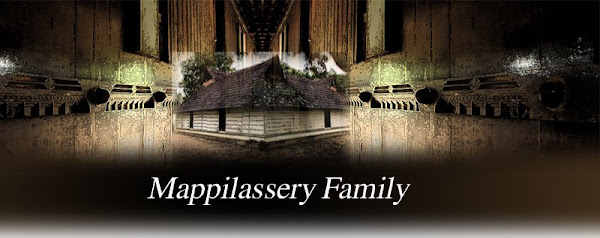History of Kerala:
Mythological Background - Parasurama, the short-tempered warrior-sage is regarded as the incarnation of Vishnu. After defeating the Kshathriya Kings, the sage approached the wise men for penance. As a Self-mortification he was advised to create a land for Brahmins. He readily agreed and meditated at Gokarnam, (considered to be the end of land). After getting the booms from Varuna, the God of the Oceans and Bhumidevi, the Goddess of earth, he proceeded to Kanya Kumari (Cape Comorin) and threw his battle-axe northwards across the waters. The waters subsided and what was left over was called the land of Parasurama, that is today's Kerala.
Scientific Theology - Geologists have pointed out that the elevation of Kerala from the sea was the result of some seismic activity, either suddenly or gradually.Another Thoughts prevailing in scientific society is the rivers of Kerala emptying into the Arabian seas bring down enormous quantities of silt from the hills. The ocean currents transport quantities of sand towards the shore. The coastal portions could well be due to the accumulation of this silt over thousands of years.
Aryans and the Dravidians:
Dravidians: Most of the Ethnologists believe that Dravidians in India is a branch of Elamite race who founded the civilization at Sumeria and Indus Valley. They reached India in prehistory and evolved in India at about 15000 BC. Dravidians became the elite inhabitants of India. The Dravidian civilization was found in the prehistory. They are also called Indus Valley people as it is one of the greatest and earliest civilizations world has ever seen. They had well planned City States built with baked bricks, swimming pools and plumbing. They had their own language and script, agriculture but no strong military. They had trade with the Mesopotamia. The period of this great civilization is estimated between BC 2500 to BC 1500.
Aryans: Aryans (Arya means "NOBLE") were Indo-Europeans lived earlier in Euro-Asia. They were War-like people and had a strong military with horses. According to Aryan Invasion theory of Max Muller they attacked Indus valley in around 1500 BC. Dravidians were pushed to South. They settled in North India and it gave rise to a new culture that may be called as Vedic culture. Their life was not city based but it was a village based one. Slowly the intellectual and priestly (Vaidik) people who were called Brahmins founded the four varnas while the Kshatriyas founded many kingdoms in the Gangetic plains.
Dravidians came to south crossing the Vindya Mountains and started agriculture since South-West corner of India was the best option for them to do agriculture in terms of natural resources and environment. Upper class Dravidians settled in the land which was later named as Kerala.
The Chera Dynasty:
By 1000 BC the south India was ruled by the Powerful Pandiyan dynasty which included most of the Kerala. Kerala was first inhabited by Ayar or Konar who were Yadavas. The Chera dynasty which was founded in the 300 BC with capital at Vanjimanagaram was perhaps founded by Panans as the Chera kings were called Banapperumals. Cheran Chenkuttuvan was a famous king. Later it extended to sea at Kodungalloor (Trichur). The Chera dynasty came to Kodungalloor and made Thiruvanchikulam their capital and ruled the Dravidians. A number of Brahmin (Vediars in sangha literature) families from the North migrated to the south and settled down, maintaining friendly relations with the Dravidians around 200 BC. Brahmins pleased Dravidian kings with their intellectual skills and they were adorned in Raja Sabha (court). Brahmins told Puranic stories and Mahabharata to the Chera and Pandiya kings of kerala. Kodungalloor Musirippatinam (Mussiris) was the major harbor city of Cheran domain at that time and it was nearby the Cheran-capital Thiruvanchikulam. Thondi (Tyndis) and Bharkare (Purakkadu) were the other ports.
Nelkinda was the southern capital of Pandiyas and Ayvels.The South Dravidian culture of Ayvels, Pandia and Chera kingdom are depicted in Sangha Literature such as Ahananooru, Purananooru and Silappathiharam written by a Chera Prince. It may give a graphic detail of the Sangha era and ancient kerala including foreigners.
Courtesy: wikipedia and other internet sources.
Sunday, February 1, 2009
Subscribe to:
Posts (Atom)



